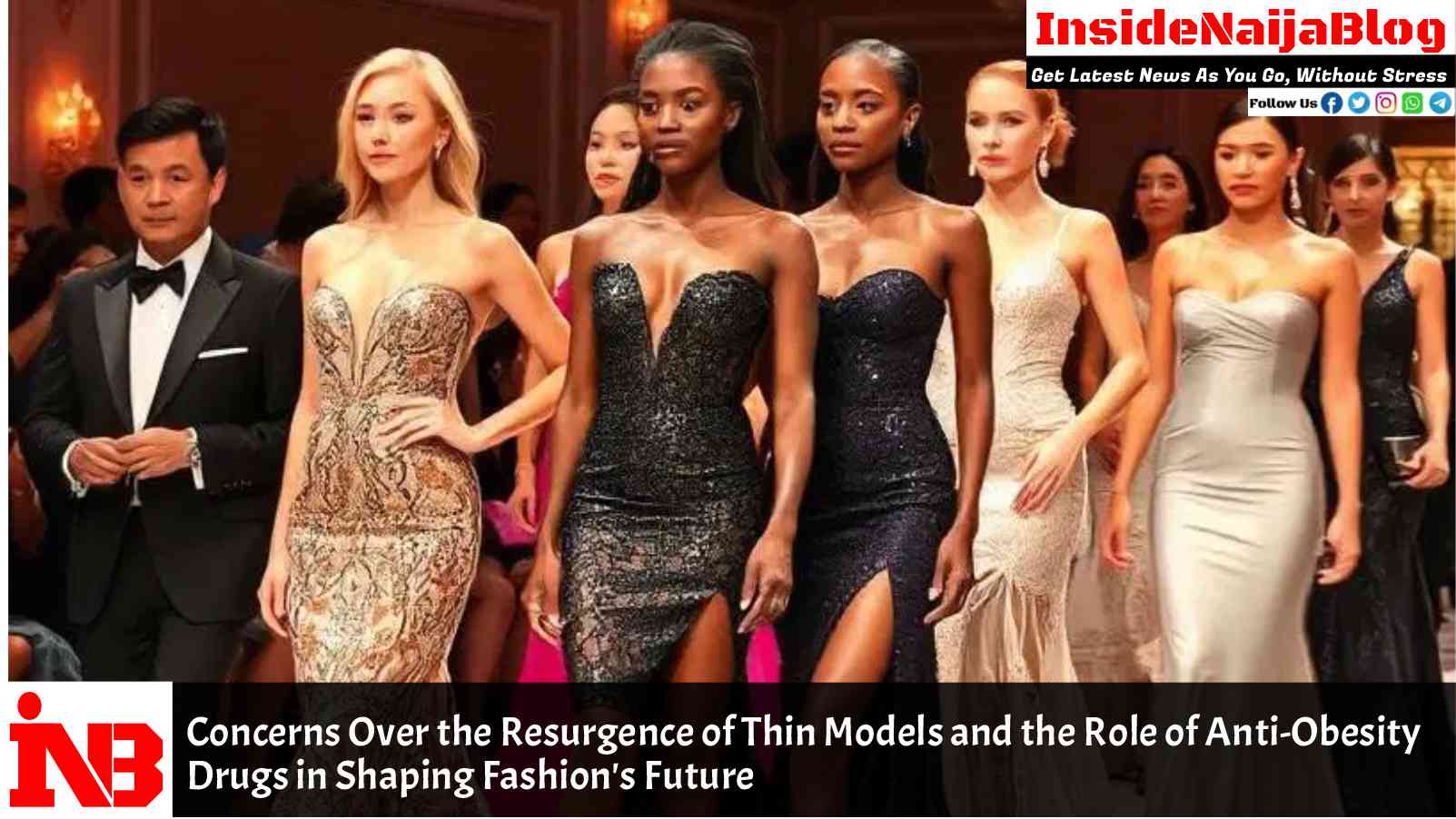Chioma Nnadi, the editorial director of British Vogue, has raised significant concerns about the return of ultra-thin models in the fashion industry, pointing to a troubling link between this trend and the increasing use of anti-obesity drugs like Ozempic. In an interview with the BBC on Wednesday, Nnadi explained that she and many of her colleagues in the fashion world are deeply concerned by what they perceive as a dangerous shift back to the promotion of a “skinny” ideal in fashion—a standard that was widely popular in the 1990s and early 2000s.
“We’re in this moment where we’re seeing the pendulum sort of swing back to skinny being ‘in’,” Nnadi remarked. “And often these things are treated like a trend, and we don’t want them to be.” She expressed unease at how the fashion industry may be reviving a trend that places undue pressure on women to fit into a narrow body type. The fashion industry’s fluctuating standards of beauty have often caused harmful consequences, both for the models themselves and for consumers who feel pressured to emulate these unrealistic ideals. Nnadi’s comments came as a reflection of a growing anxiety among those in the fashion world who are trying to push for more inclusivity and body diversity, but feel that forces beyond their control are pushing the industry back in the opposite direction.
At the heart of Nnadi’s concern is the growing cultural obsession with thinness, fueled in part by the rise of weight-loss drugs like Ozempic, which has gained notoriety for its ability to help users shed pounds quickly and effectively. “I think there’s this shift in the culture around how we think about our bodies and how we address our bodies,” Nnadi explained. She pointed to the fact that many celebrities have been openly using Ozempic and similar drugs to maintain or lose weight, leading to a proliferation of discussions about “quick fixes” for achieving thinness. Nnadi indicated that this trend is not just a passing fad, but one that could have long-term repercussions for body image standards in the fashion industry and society at large.
The issue is not entirely new. The 1990s and early 2000s were marked by the rise of the “heroin chic” aesthetic, which glorified extremely thin models and set the standard for beauty at the time. Supermodel Kate Moss became the most iconic face of this trend, with her gaunt physique gracing countless magazine covers and runway shows. This image became ingrained in the collective consciousness as the epitome of beauty and success, setting a damaging precedent that still lingers in fashion today. In many ways, Nnadi’s concerns echo the backlash from those who felt that the industry was contributing to an unhealthy and unrealistic body image culture.
Although there has been progress in recent years, with many brands and designers making efforts to include a broader range of body types in their collections, Nnadi’s assessment reveals that the issue is far from resolved. She acknowledged that, while British Vogue has made strides in showing models of all shapes and sizes, there is still a pervasive underrepresentation of diverse body types on the runway. She noted that while the magazine strives to showcase a wide variety of models, the fashion industry’s reliance on sample-sized clothing often limits the representation of larger models, as these garments are typically designed to fit a very specific body type. “We should all be concerned, I am very concerned and I know many of my colleagues are,” Nnadi said, making it clear that this isn’t just a matter for one publication or brand to address—it is a broader cultural issue that needs industry-wide action.
For British Vogue under Nnadi’s leadership, the goal is to shift the conversation away from size and toward inclusivity. “We’re trying to show models of all sizes,” Nnadi explained, emphasizing that the fashion world should move beyond the outdated notion of beauty being defined by a single, narrowly defined standard. However, she was candid about the limitations her magazine faces in changing the industry’s entrenched practices. The use of models who are “especially thin” is still widespread, and designers continue to produce collections that prioritize sample sizes over more inclusive sizing.
Moreover, the rise of anti-obesity drugs like Ozempic raises the question of how far the industry will go in perpetuating the idea that being thin is the ultimate aspiration. As celebrities and influencers showcase dramatic weight loss on social media, there is growing pressure on both everyday consumers and models to conform to these new standards. It’s worth noting that the availability of these drugs has expanded the conversation beyond fashion into mainstream culture, leading to concerns about their long-term effects on body image and self-esteem.
In addition to the use of weight-loss drugs, the resurgence of thin models in fashion could have even wider implications for the health and well-being of those in the industry. Nnadi, like many of her colleagues, is wary of the harmful impact these shifting standards can have, especially when they are influenced by pharmaceutical solutions that promise effortless weight loss. The emphasis on thinness, especially as it is tied to celebrity culture and the use of drugs like Ozempic, could further normalize unhealthy relationships with food and body image.
Nnadi’s concerns come at a time when fashion and the broader media industry are grappling with issues of representation and inclusivity. While British Vogue has worked hard to feature a diverse range of models, from various racial and ethnic backgrounds to different body types, the industry as a whole still has a long way to go in achieving true diversity. As Nnadi pointed out, the shift toward body positivity and inclusivity cannot be achieved by magazines alone, and designers must also take responsibility for ensuring that their clothes are designed for all body types. For now, though, Nnadi’s warning serves as a crucial reminder of the delicate balance the fashion world must strike between creativity, inclusivity, and health.
As the conversation around body image, weight loss, and inclusivity continues to evolve, it is clear that the influence of anti-obesity drugs like Ozempic will continue to shape cultural attitudes toward bodies. Nnadi’s leadership at British Vogue may help push the industry toward more thoughtful and responsible representations of beauty, but as she acknowledges, this is a larger issue that requires collective action across all levels of fashion.




